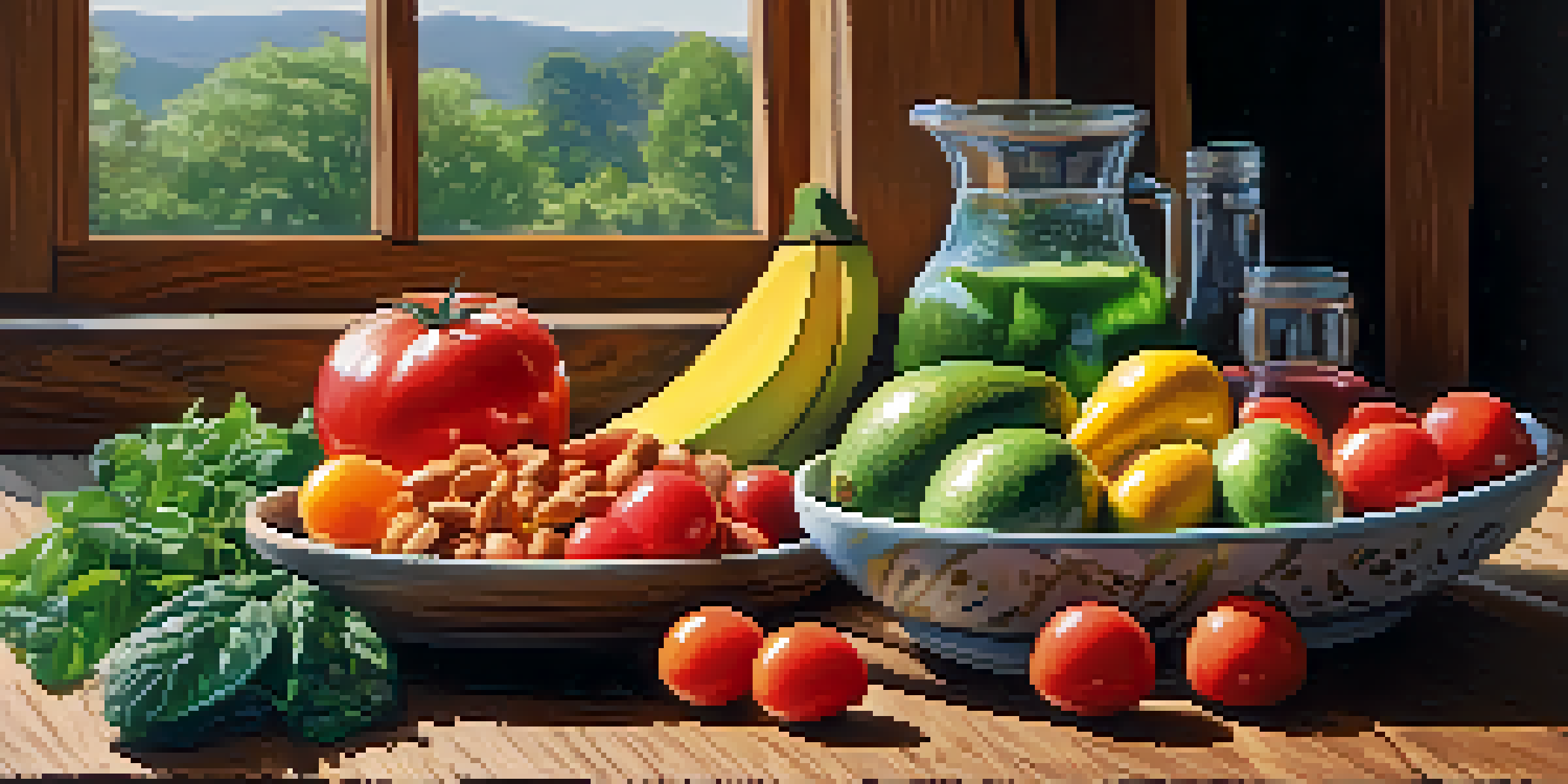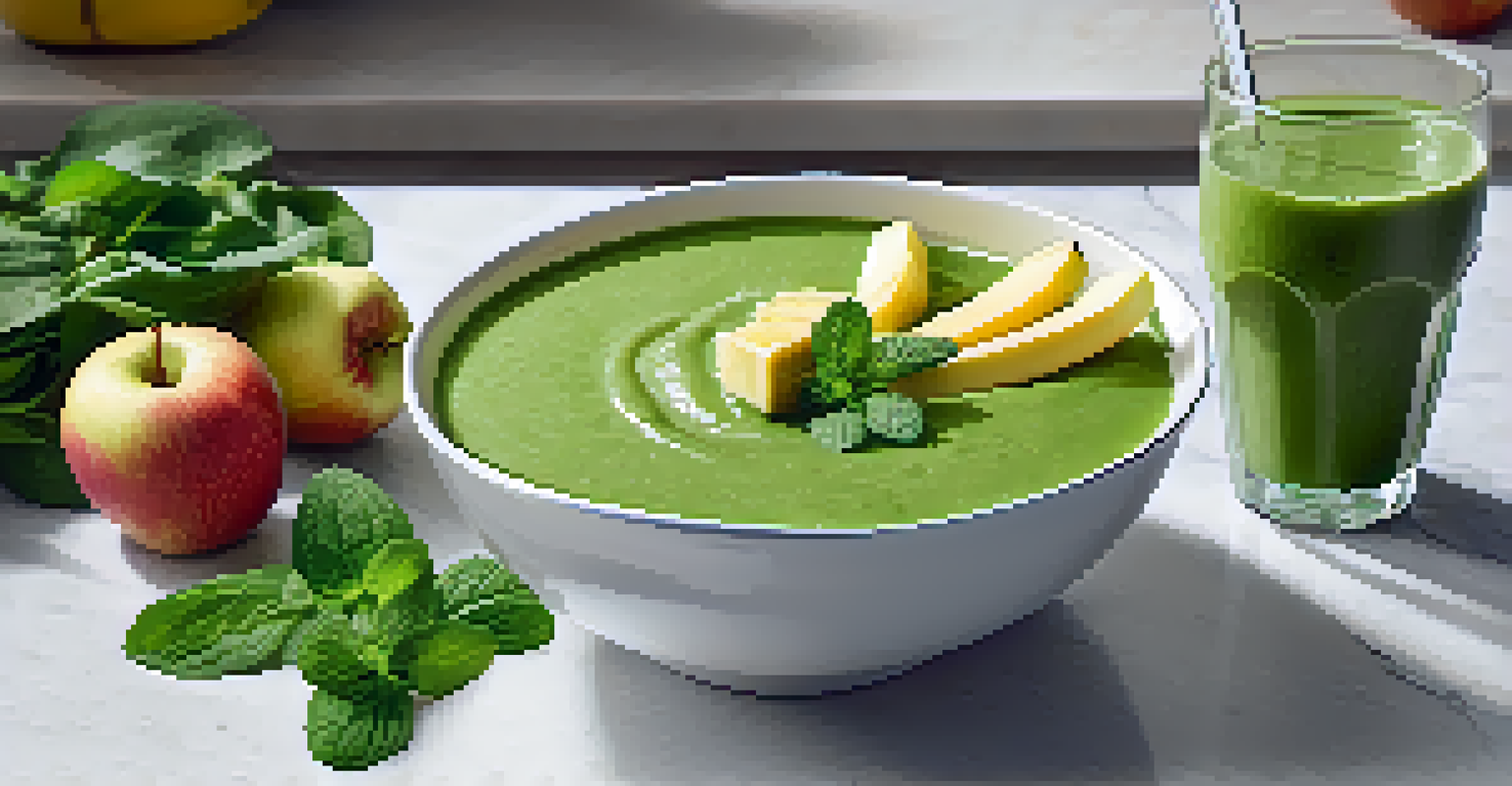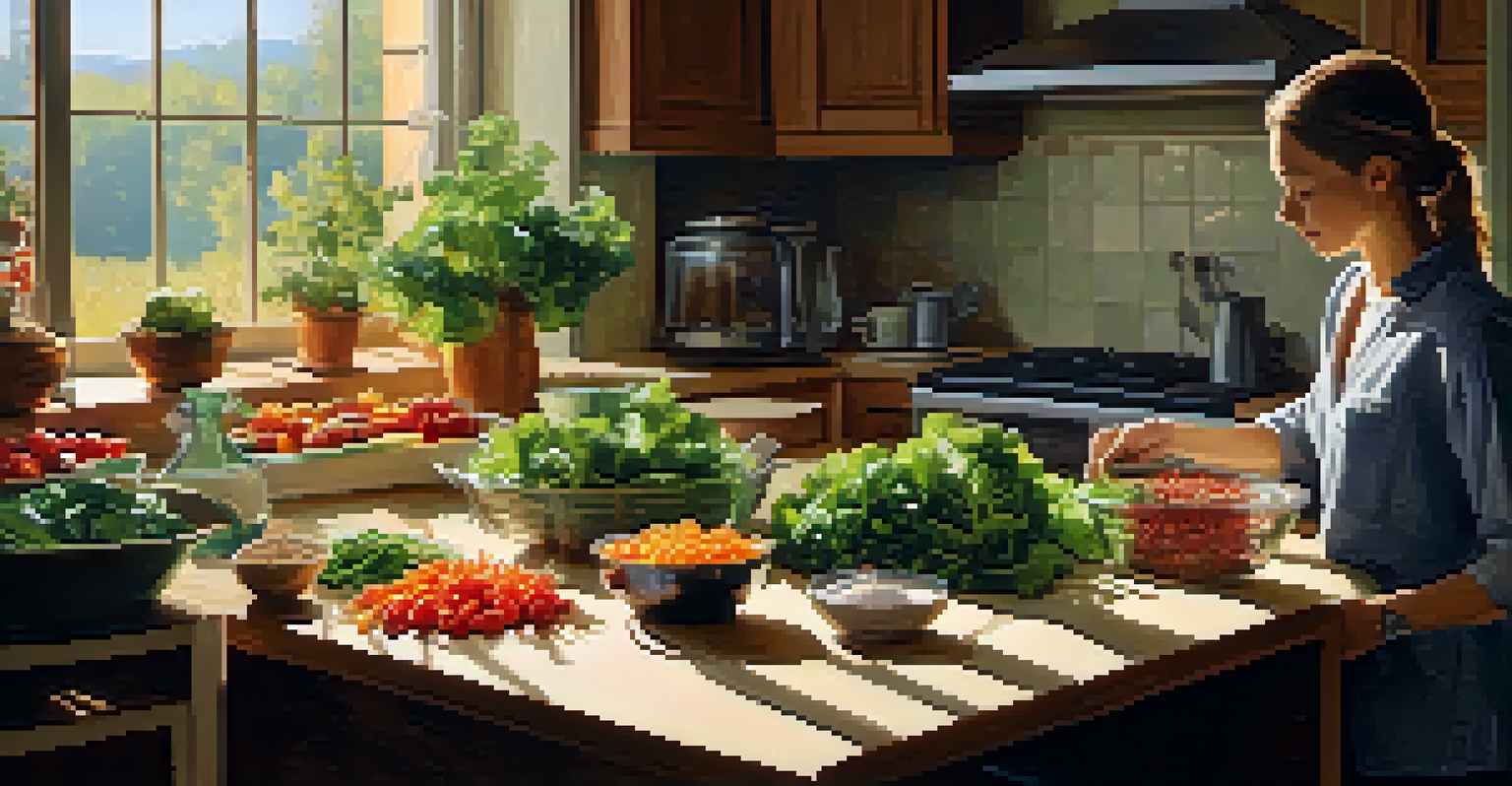Eating Raw Food Means No Cooking: Debunking a Common Misconception

What Does Eating Raw Food Really Mean?
When people hear 'raw food,' they often think that it means no cooking whatsoever. However, the reality is a bit more nuanced. Eating raw food typically refers to consuming unprocessed, whole foods that haven’t been heated above a certain temperature, usually 104°F to 118°F. This allows the nutrients to remain intact, promoting health benefits without sacrificing flavor.
Let food be thy medicine and medicine be thy food.
For instance, many raw food enthusiasts enjoy dishes that are dehydrated or lightly warmed, which can enhance their flavors while still adhering to raw principles. Think of it like toasting bread—it's a form of cooking, but it still allows the original ingredients to shine. So, while the concept of 'raw' might suggest a lack of preparation, there’s actually a lot of creativity involved.
Ultimately, embracing raw food doesn’t mean you have to give up all cooking methods. It’s about choosing how you prepare your ingredients, focusing on preserving their natural goodness while exploring various textures and flavors.
Common Misconceptions About Raw Food Diets
One prevalent misconception is that a raw food diet is restrictive and boring. On the contrary, raw food diets can be incredibly diverse and vibrant! You can enjoy a wide array of fruits, vegetables, nuts, seeds, and even raw versions of desserts. For example, a raw chocolate mousse made from avocados and cocoa can be both delicious and nutritious.

Another myth is that raw food diets lack sufficient protein. While it’s true that some traditional protein sources are cooked, there are plenty of raw options. Nuts, seeds, legumes, and even certain grains can provide ample protein. With a little planning, it’s entirely possible to meet your protein needs while enjoying the fresh flavors of raw foods.
Raw Food is More Than Just Uncooked
Eating raw food involves consuming unprocessed, whole foods that haven't been heated above 104°F to 118°F, allowing nutrients to remain intact while still offering creative preparation methods.
Finally, some believe that raw foods are only for those looking to lose weight. While many do turn to raw foods for this reason, the diet can be beneficial for anyone seeking a healthier lifestyle. It's about nourishing the body and enjoying the process of preparing and eating food in its most natural state.
The Benefits of a Raw Food Diet
Eating raw food can offer numerous health benefits that go beyond just weight loss. Fresh, whole foods are rich in vitamins, minerals, and enzymes that can boost your overall health. For example, many people report increased energy levels and improved digestion after incorporating more raw foods into their diets.
The food you eat can be either the safest and most powerful form of medicine or the slowest form of poison.
Additionally, raw foods are often lower in calories and high in fiber, making them a great option for those looking to maintain a healthy weight. Imagine filling your plate with colorful salads and crunchy snacks instead of processed items—your body will thank you! The variety of textures and flavors can also make meals more enjoyable.
Lastly, a raw food diet encourages mindfulness in eating. Preparing meals from whole ingredients can foster a deeper connection with the food we consume. This practice can lead to healthier eating habits and a greater appreciation for the natural world around us.
How to Incorporate Raw Foods into Your Diet
If you're curious about raw foods but not ready to commit to a full raw diet, there are simple ways to start incorporating them into your meals. Begin by adding a raw salad to your lunch or dinner. It’s an easy, delicious way to increase your intake of fresh vegetables. You might be surprised at how much flavor and satisfaction a simple salad can provide.
Another approach is to swap out a few cooked snacks for raw options. Instead of chips, try raw veggies with hummus or a handful of raw nuts. These alternatives are not only healthier but also keep you feeling fuller for longer, thanks to their fiber and healthy fat content.
Diverse and Nutritious Raw Options
Contrary to misconceptions, a raw food diet can be vibrant and fulfilling, featuring a variety of fruits, vegetables, nuts, and even delicious raw desserts.
Lastly, experiment with raw smoothies. Blending fruits and greens can create a refreshing and nutrient-packed drink. It's a fantastic way to sneak in extra servings of fruits and vegetables without feeling like you’re eating a salad every day.
The Role of Dehydration in Raw Food Prep
Dehydration is a popular technique in the raw food community that allows for a variety of textures and flavors while keeping foods raw. By removing moisture, you can create crunchy snacks like kale chips or fruit leathers that satisfy cravings without the need for cooking. It’s a fun way to enjoy familiar flavors in new forms.
This method also helps preserve foods for longer periods, making it easier to have raw snacks on hand. Think of it as a way to enjoy the essence of your favorite fruits and vegetables without the hassle of cooking. Plus, dehydrated foods can bring an exciting element to your meals and snacks.
Incorporating dehydrated foods into your diet can also enhance your culinary creativity. You can blend dehydrated vegetables into powders for seasoning or use them as toppings on salads. The possibilities are endless when you start to think outside the box!
Myth-Busting: Raw Food and Food Safety
Food safety is a valid concern when it comes to raw foods, but it's important to understand that raw doesn't automatically mean unsafe. With proper handling and storage, raw foods can be just as safe as cooked ones. For instance, washing fruits and vegetables thoroughly can help remove any contaminants while preserving their nutrients.
It's also crucial to be mindful of the freshness of your ingredients. Using high-quality, organic produce can minimize the risk of foodborne illness. Think of it as a proactive approach to your health—by choosing fresh ingredients, you're setting yourself up for success in your raw food journey.
Community Enhances Raw Food Experience
Connecting with others interested in raw foods through workshops or online forums can provide support, inspiration, and motivation as you explore this lifestyle.
Lastly, it's essential to listen to your body. If you feel unsure about consuming certain raw foods, trust your instincts. Educate yourself about safe food practices, and don’t hesitate to consult a nutritionist if you have questions about raw food safety.
Finding Community in the Raw Food Movement
Exploring the raw food lifestyle can feel overwhelming, but finding a community can make the journey much more enjoyable. Whether it’s online forums, social media groups, or local meet-ups, connecting with others who share your interest can provide support and motivation. Sharing recipes and experiences can inspire new ideas and help you stay committed.
You might also consider attending raw food workshops or classes. These events offer hands-on learning opportunities and allow you to meet like-minded individuals who can become friends along the way. Plus, nothing beats enjoying a meal together that everyone can feel good about!

Ultimately, embracing the raw food lifestyle doesn't have to be a solo endeavor. Building relationships with fellow enthusiasts can enrich your experience and open doors to new culinary adventures. Together, you can explore the world of raw foods and find joy in nourishing your bodies and minds.